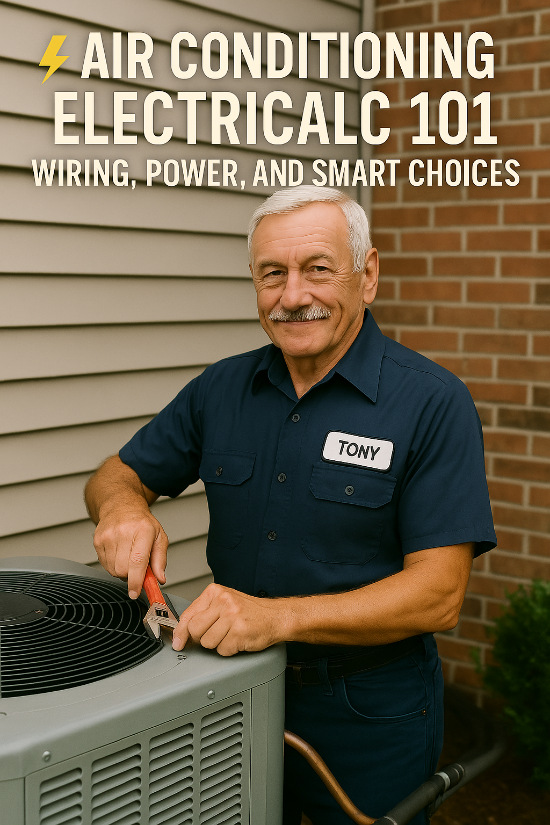👋 Hey folks, Tony here! Are you thinking about upgrading your HVAC systems or are you just curious about how your AC gets all its power? Let's break down the essentials of air conditioning electrical systems, from wiring basics to energy-efficient options—all in plain English 🧰⚡
🔌 Understanding Air Conditioning Electrical Systems
When you install a central air system like the 2.5 Ton 14.5 SEER2 Air Conditioner and Air Handler System, you’re not just plopping in a unit and plugging it in. These systems usually require a dedicated 220-volt circuit, separate from the rest of your home’s power grid. Why? Because your AC needs a whole lot more juice than a regular appliance 🏡⚡
If you're wondering how all the wiring connects—or if you're planning to tackle some DIY work (carefully!)—you’ll find this Family Handyman guide on air conditioning wiring super helpful. It breaks down what goes where and why, especially when you’re setting up a new system or replacing an old one.
⚙️ Electronic Air Conditioners and Smart Technology
Modern electronic air conditioners have leveled up with smart features that make your home cooling more efficient and more convenient 📲❄️. Units now come with built-in Wi-Fi, voice controls, and apps that let you tweak your settings from anywhere. That’s not just cool—it’s smart.
If you’re curious about how these smart air conditioners work or what features are worth your money, Lifewire has a great overview that explains everything from remote control options to energy tracking. This kind of technology doesn’t just make your life easier—it can help lower your energy bills too 💸
🏠 Central Air Electrical Considerations
Let’s talk central air electrical for a minute. Central systems—especially high-efficiency models—can pull up to 5,000 watts at startup. That’s a big ask from your home’s panel, so it’s critical to have the right circuit breaker and wire gauge installed.
PickHVAC has a useful breakdown of how much electricity different types of AC systems require. This info is gold if you're upgrading or troubleshooting your current setup 🔍💡
And if you're thinking about having a system like this professionally installed (which I highly recommend unless you're a licensed electrician), this Family Handyman guide to central air installation walks you through the process from prep to final hookup. Trust me—knowing what to expect helps you ask the right questions and avoid surprise costs down the road.
🧯 Safety First—Always!
Whether you're upgrading your air con electric components or setting up a new system from scratch, remember this: electricity isn’t something you want to “wing it” with. A loose connection or undersized breaker can lead to short circuits, fire hazards, or even damage to your brand-new AC 😬🔥
When in doubt, call in a licensed HVAC electrician. And while you’re at it, ask about energy-efficient upgrades, surge protection, and smart thermostats that could further enhance your system’s safety and savings.
💭 Final Thoughts from Tony 💭
Look, I’ve seen a lot of setups over the years—some done right, and some... well, let’s just say not so much. When it comes to air conditioning electrical, getting it right from the start means fewer headaches down the line. Whether you're installing a high-efficiency central air system like this one or upgrading to a smart electronic unit, the wiring and electrical components matter just as much as the brand name or SEER rating.
If you take one thing away from this post, let it be this: don’t skimp on the wiring. It’s the backbone of your whole cooling system. Combine a quality unit with a solid electrical setup, and you’ll be chillin’ for years to come 😎❄️
🛠️ From my toolbelt to your thermostat, stay comfortable
— Tony 🛠️







